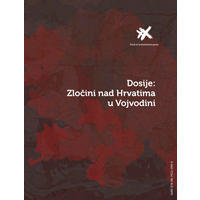
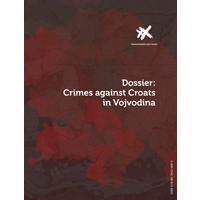 In the period 1991-1995, in the territory of the Autonomous Province of Vojvodina, there was a campaign of intimidation and pressure on Croatian civilians with the aim to force them to leave their homes, and Serbia as well. The campaign, the intensity of which changed and reached its highest peaks in the second half of 1991, from spring to autumn 1992 and in summer of 1995, resulted in the expulsion of several tens of thousands of Croats from Vojvodina. Violence against Croats in Vojvodina included attacks on their private property and religious buildings, as well as threats, physical attacks and murders.
In the period 1991-1995, in the territory of the Autonomous Province of Vojvodina, there was a campaign of intimidation and pressure on Croatian civilians with the aim to force them to leave their homes, and Serbia as well. The campaign, the intensity of which changed and reached its highest peaks in the second half of 1991, from spring to autumn 1992 and in summer of 1995, resulted in the expulsion of several tens of thousands of Croats from Vojvodina. Violence against Croats in Vojvodina included attacks on their private property and religious buildings, as well as threats, physical attacks and murders.
Vojislav Šešelj and his Serbian Radical Party (SRS) were the main advocates and inspirers of the campaign of intimidation and pressure on the Croat population in Vojvodina. The persecution of Croatian families was carried out under the pressure of various groups close to the SRS, composed of the local population, a militant part of the Serbian refugees from Croatia, and of members of volunteer units from Serbia who had participated in the wars in Croatia and Bosnia and Herzegovina.
This intimidation campaign took place with the awareness and tacit approval of the political structures of the Republic of Serbia. The evidence presented in this Dossier shows that in some acts of violence against Croats, persons from the Ministry of Internal Affairs (MUP) of the Republic of Serbia also took part. In addition, in the forced eviction of Vojvodina Croats, the State Security Department (RDB) of the MUP of the Republic of Serbia played a significant role.
In the period between the two population censuses of 1991 and 2002, the number of Croats and members of other non-Serb populations in the territory of Vojvodina was noticeably reduced. The number of Croats was reduced in 39 out of 45 municipalities in Vojvodina; and across the territory of the entire Vojvodina, the number of Croats decreased by 18,262, i.e. by 24.41%.
In this Dossier, evidence of events in certain Vojvodina municipalities (Ruma, Šid, Stara Pazova, Inđija, Petrovaradin and Apatin) has been presented, showing how strong the pressure on the Croats to emigrate was, and where the ethnic picture was changed the most. The Dossier is based on the testimonies of witnesses and families of victims given to the Humanitarian Law Center, RDB documents, judgments of the courts in Serbia, and documents presented to the International Criminal Tribunal for the former Yugoslavia, as well as media reports.
Dossier: Crimes against Croats in Vojvodina is available here.
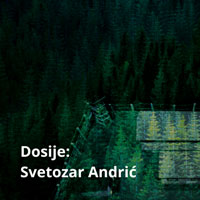
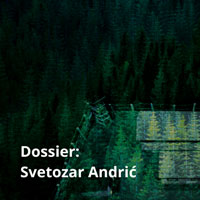 During the armed conflict in the territory of Bosnia and Herzegovina (BiH), Svetozar Andrić served as the commander of the 1st Birač Infantry Brigade of the Army of Republika Srpska (VRS), and, after July 1995, as the Deputy Commander and Chief of Staff of the Drina Corps of the VRS.
During the armed conflict in the territory of Bosnia and Herzegovina (BiH), Svetozar Andrić served as the commander of the 1st Birač Infantry Brigade of the Army of Republika Srpska (VRS), and, after July 1995, as the Deputy Commander and Chief of Staff of the Drina Corps of the VRS.





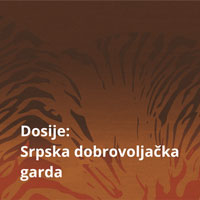
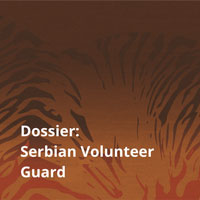 The crimes committed by the Serbian Volunteer Guard (SDG/the Guard), a group formed by Željko Ražnatović (Arkan), and its links with the Serbian police, military and political establishment, were an integral part of the indictments of the ICTY’s Office of the Prosecutor against Slobodan Milošević, Goran Hadžić, Jovica Stanišić and Franko Simatović.
The crimes committed by the Serbian Volunteer Guard (SDG/the Guard), a group formed by Željko Ražnatović (Arkan), and its links with the Serbian police, military and political establishment, were an integral part of the indictments of the ICTY’s Office of the Prosecutor against Slobodan Milošević, Goran Hadžić, Jovica Stanišić and Franko Simatović.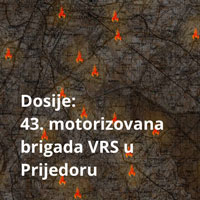
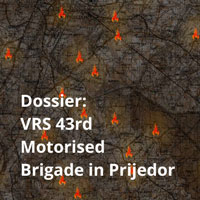 Between May and August 1992, units of the 1st Krajina Corps of the Army of the Republika Srpska (VRS), together with the police of the Republika Srpska, Territorial Defence Force (TO) units and various volunteer groups, carried out attacks on a large number villages in the municipality of Prijedor inhabited predominantly by Bosniaks and Croats.
Between May and August 1992, units of the 1st Krajina Corps of the Army of the Republika Srpska (VRS), together with the police of the Republika Srpska, Territorial Defence Force (TO) units and various volunteer groups, carried out attacks on a large number villages in the municipality of Prijedor inhabited predominantly by Bosniaks and Croats.
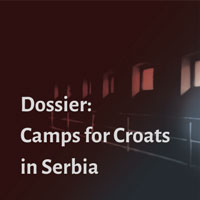 On November 18, 1991, after a three-month siege of the city, the Yugoslav Peoples’ Army (JNA) took over Vukovar with the assistance of the Serbian Territorial Defence Forces (TO) and military volunteer units. Upon occupying the city, a large number of members of the Croatian forces, as well as civilians, were captured by the JNA, including the wounded, women, minors and elderly people.
On November 18, 1991, after a three-month siege of the city, the Yugoslav Peoples’ Army (JNA) took over Vukovar with the assistance of the Serbian Territorial Defence Forces (TO) and military volunteer units. Upon occupying the city, a large number of members of the Croatian forces, as well as civilians, were captured by the JNA, including the wounded, women, minors and elderly people.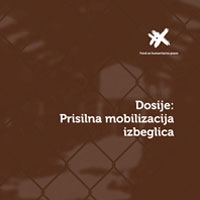
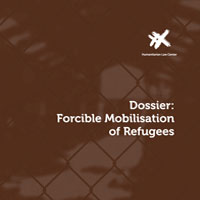 From the outbreak of war in Croatia and BiH, and especially in connection with the Croatian military-police operations “Flash” and “Storm”, about 500,000 Serbs, citizens of Croatia and BiH, fled to Serbia. Tens of thousands of Serbs from Croatia fled to Serbia during 1991 and 1992. They mostly exchanged their houses and property with Croats from Vojvodina, who, under pressure from the Serbian Radical Party and paramilitary groups, left Serbia. At least 200,000 people fled Croatia from May until the end of August 1995, during and after the “Flash” and “Storm” operations of the Croatian Army and the MUP. Most of the refugees were accommodated in reception centres across Serbia, in old hotels, unused public facilities, or with relatives and friends, and only a few were able to rent an apartment.
From the outbreak of war in Croatia and BiH, and especially in connection with the Croatian military-police operations “Flash” and “Storm”, about 500,000 Serbs, citizens of Croatia and BiH, fled to Serbia. Tens of thousands of Serbs from Croatia fled to Serbia during 1991 and 1992. They mostly exchanged their houses and property with Croats from Vojvodina, who, under pressure from the Serbian Radical Party and paramilitary groups, left Serbia. At least 200,000 people fled Croatia from May until the end of August 1995, during and after the “Flash” and “Storm” operations of the Croatian Army and the MUP. Most of the refugees were accommodated in reception centres across Serbia, in old hotels, unused public facilities, or with relatives and friends, and only a few were able to rent an apartment.
 In the period 1991-1995, in the territory of the Autonomous Province of Vojvodina, there was a campaign of intimidation and pressure on Croatian civilians with the aim to force them to leave their homes, and Serbia as well. The campaign, the intensity of which changed and reached its highest peaks in the second half of 1991, from spring to autumn 1992 and in summer of 1995, resulted in the expulsion of several tens of thousands of Croats from Vojvodina. Violence against Croats in Vojvodina included attacks on their private property and religious buildings, as well as threats, physical attacks and murders.
In the period 1991-1995, in the territory of the Autonomous Province of Vojvodina, there was a campaign of intimidation and pressure on Croatian civilians with the aim to force them to leave their homes, and Serbia as well. The campaign, the intensity of which changed and reached its highest peaks in the second half of 1991, from spring to autumn 1992 and in summer of 1995, resulted in the expulsion of several tens of thousands of Croats from Vojvodina. Violence against Croats in Vojvodina included attacks on their private property and religious buildings, as well as threats, physical attacks and murders.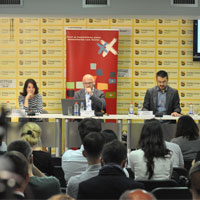

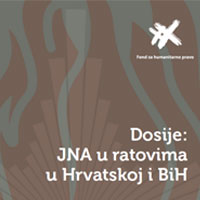
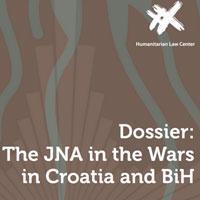 The role of the Yugoslav People’s Army (JNA) in the wars in Croatia and Bosnia and Herzegovina (BiH) and its transformation from the Yugoslav into the Serbian army, is the subject of this, the tenth Dossier of the Humanitarian Law Center (HLC). It is the most extensive of the HLC Dossiers so far, covering the period from the end of the 1980s up to May 1992. It explores how the JNA and political leadership of the Socialist Federative Republic of Yugoslavia (SFRY) and Serbia prepared for the wars, the JNA’s involvement in the conflicts, and its contribution to achieving the wartime goals of Serbia, the Republic of Serbian Krajina and Republika Srpska.
The role of the Yugoslav People’s Army (JNA) in the wars in Croatia and Bosnia and Herzegovina (BiH) and its transformation from the Yugoslav into the Serbian army, is the subject of this, the tenth Dossier of the Humanitarian Law Center (HLC). It is the most extensive of the HLC Dossiers so far, covering the period from the end of the 1980s up to May 1992. It explores how the JNA and political leadership of the Socialist Federative Republic of Yugoslavia (SFRY) and Serbia prepared for the wars, the JNA’s involvement in the conflicts, and its contribution to achieving the wartime goals of Serbia, the Republic of Serbian Krajina and Republika Srpska.

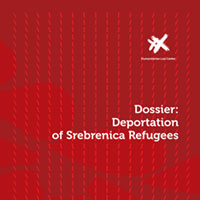 After the fall of Srebrenica on 11 July, 1995, an estimated 7,905 persons disappeared, mostly men considered by the Army of Republika Srpska as “able-bodied”. DNA analysis of the mortal remains of those found in mass graves, to date, has enabled positive identification of 5,977 persons killed in Srebrenica.
After the fall of Srebrenica on 11 July, 1995, an estimated 7,905 persons disappeared, mostly men considered by the Army of Republika Srpska as “able-bodied”. DNA analysis of the mortal remains of those found in mass graves, to date, has enabled positive identification of 5,977 persons killed in Srebrenica.